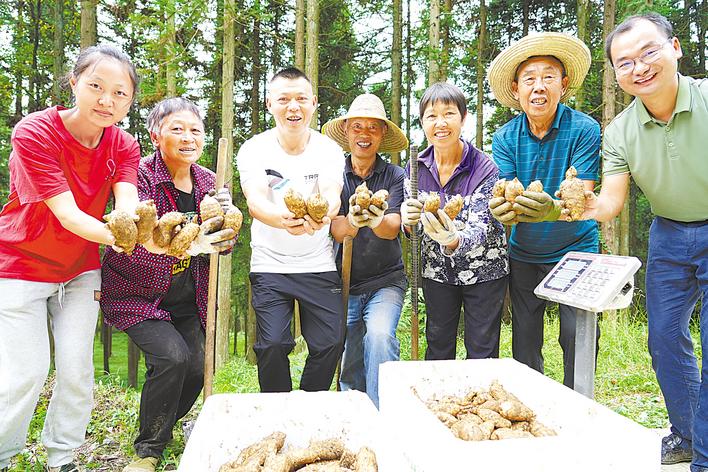How a Chinese county became a hub for herbal medicine
2024-11-21 20:11:02
By Ma Yuanchen. Deng Ziyi, Lu Shu also contributed to this article.
Somewhere in the lush mountains of Wufeng, a county in Hubei province, grows the medicinal plant known as Tianma (Gastrodia elata). This traditional Chinese medicinal herb has been used to treat neurological conditions like strokes, relieve muscle pain, and support brain health. The Tianma industry is thriving as an eco-friendly and economically viable alternative to traditional farming practices. Known for tea and herbs, the region of Wufeng has successfully cultivated a new variety of Tianma, "Fengma 1," which addresses the traditional challenges faced in Tianma cultivation, such as yield stability and adaptability to environmental conditions.

The industry is transitioning to an ecological model that utilizes artificial substrates and moving away from the traditional methods that heavily depended on forest resources. This method reduces wood consumption by over 70 percent. The shift not only helps to protect the environment but also enhances yield and reduces labor costs by 30 percent. As a result, the annual output value of Tianma has surpassed 1 billion yuan (137 million USD), establishing the industry as a significant contributor to local income.
Wufeng County is set to expand its Tianma cultivation efforts to 10,000 mu (667 hectares) by 2025, with a target of achieving a comprehensive output value of 10 billion yuan by 2035. The county is exploring the integration of Tianma into the broader health industry, with products like freeze-dried Tianma and other Tianma-based health foods.
 Photo by Lu Shu
Photo by Lu Shu
Somewhere in the lush mountains of Wufeng, a county in Hubei province, grows the medicinal plant known as Tianma (Gastrodia elata). This traditional Chinese medicinal herb has been used to treat neurological conditions like strokes, relieve muscle pain, and support brain health. The Tianma industry is thriving as an eco-friendly and economically viable alternative to traditional farming practices. Known for tea and herbs, the region of Wufeng has successfully cultivated a new variety of Tianma, "Fengma 1," which addresses the traditional challenges faced in Tianma cultivation, such as yield stability and adaptability to environmental conditions.

Photo by Deng Ziyi
The industry is transitioning to an ecological model that utilizes artificial substrates and moving away from the traditional methods that heavily depended on forest resources. This method reduces wood consumption by over 70 percent. The shift not only helps to protect the environment but also enhances yield and reduces labor costs by 30 percent. As a result, the annual output value of Tianma has surpassed 1 billion yuan (137 million USD), establishing the industry as a significant contributor to local income.
Wufeng County is set to expand its Tianma cultivation efforts to 10,000 mu (667 hectares) by 2025, with a target of achieving a comprehensive output value of 10 billion yuan by 2035. The county is exploring the integration of Tianma into the broader health industry, with products like freeze-dried Tianma and other Tianma-based health foods.
 Photo by Lu Shu
Photo by Lu ShuThe success of Tianma cultivation in Wufeng exemplifies the potential of sustainable agricultural practices that both protect the environment and drive economic growth, positioning Wufeng as a key player in the medicinal herb market.






